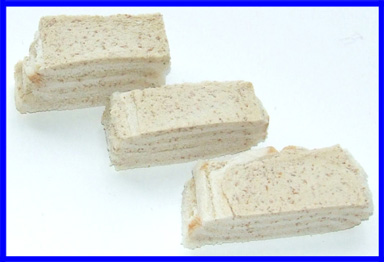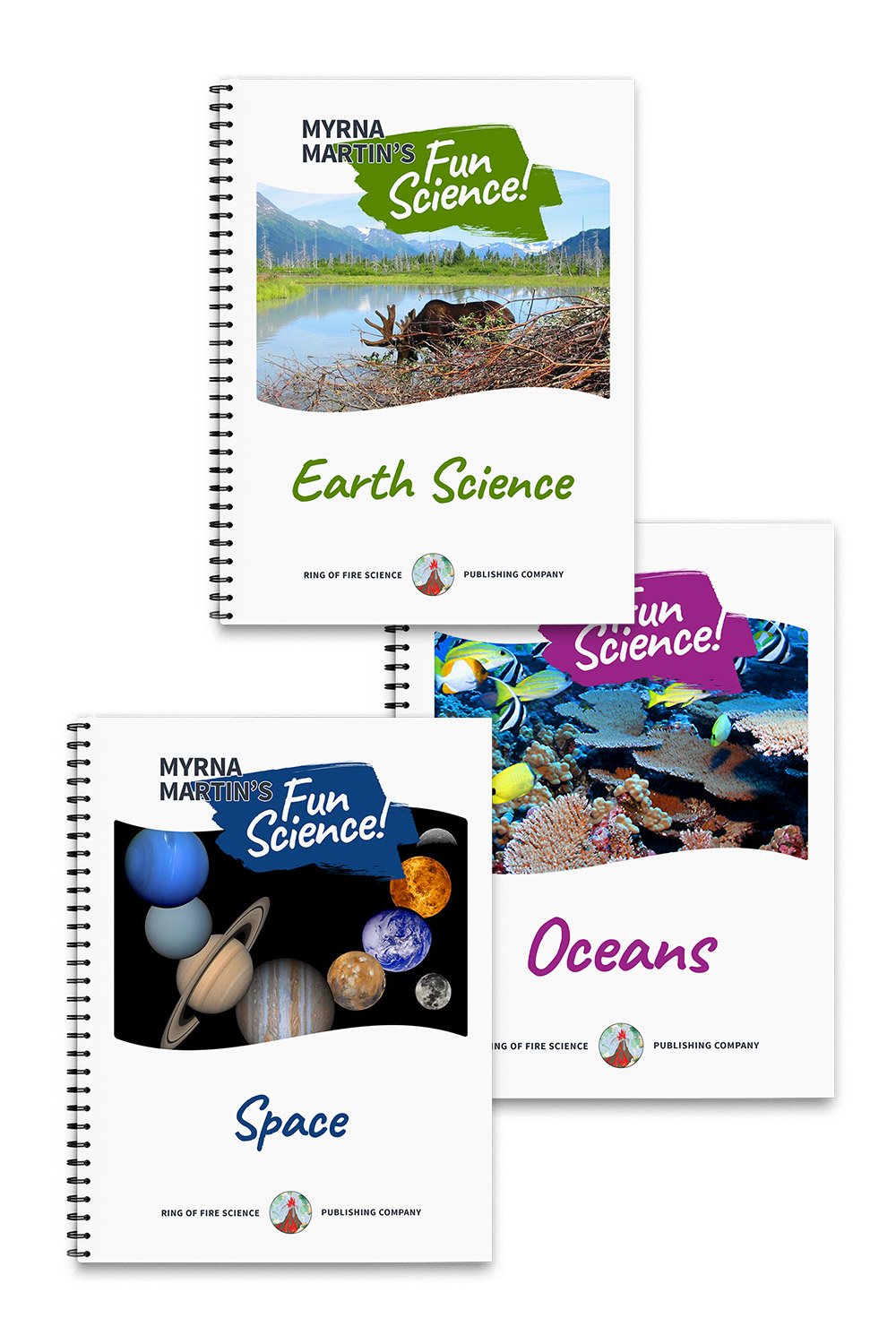Simple Science Experiments
Pressing Layers
These simple science experiments demonstrate how sedimentary layers compress under pressure. The Mississippi, Nile, Amazon are just three great rivers that carry large amounts of sediment from the continents to the oceans. At the mouth of the rivers the largest particles settle out. Further offshore silt drifts to the ocean floor. After each rainstorm or floor a new layer of silt settles to the ocean floor.
NASA estimates that 500 million tons of sediment are deposited on the ocean floor each year by the Mississippi River. The bottom layers have tremendous pressure exerted on them not only by the ocean water but also by the individual layers above. As the pressure increases the water is forced out and sedimentary rock forms. In this experiment you will see the effects of pressure on dark and light slices of bread.
Materials
- Wax paper
- Wheat bread
- White bread
- Ruler
- Books
Directions
- Trim the crust off of 5 slices of wheat bread.
- Trim the crust off of 5 slices of white bread.
- Place a sheet of wax paper on a counter, table or floor.
- Stack alternating layers of white and wheat bread slices on the wax paper.
- When all the bread has been put in the stack measure the height of the stack with a ruler.
- Make a guess how much the bread will compress during this experiment.
- Place a second piece of wax paper on top of the bread.
- Balance several large books on top of the bread.
- Leave the book covered pieces of bread alone for one week.
- At the end of the week take off the books and top layer of wax paper.
- Measure the bread to find out how much it has compressed.
- Record your before and after information on a sheet of paper.
- What do you think would happen if you repeated this experiment and used even more books?
- Add several more books to your bread layers and leave them for several days.
- Remeasure the height of the bread layers.
More Links to Science Experiments
Cool Science Experiments, Funny Bones In these fun experiments find out how you can create "funny bones" that can bend.
Easy Science Experiments, Pumice & Obsidian Find out the difference between pumice and obsidian and why one will float and the other will sink like a rock.
Volcano Science Experiment, Cinder Cones Have you ever wondered how volcanoes get their shape? Find out about cinder cones in this fun activity.
Gravity Experiments, Balancing Acts Learn how to balance a potato, fork and pencil on the edge of a table.
Elementary Science Experiment, Earthquake Waves Create your own wave box that makes paper clips jump when earthquake waves pass through them.
Simple Science Experiments, Pressing Layers In these simple science experiments discover how bread slices can turn into sedimentary layers in this fun experiment.
Earth Science The links on this page include information on the Earth, the Rock Cycle, Volcanoes, experiments, activities and much more.
KIDS FUN SCIENCE BOOKSTORE
 |
 |
Check out Myrna Martin's award winning textbooks, e-books, videos and rock sets. The Kids Fun Science Bookstore covers a wide range of earth science topics. Click here to browse.
Sign up to our monthly newsletter and receive our FREE eBook containing 3 fun activities that don’t appear in any of our other books!
The Kids Fun Science monthly newsletter will include the following: current events, weird and fantastic facts, a question of the month, science trivia and the latest new content from our website.
We respect your privacy and you can be assured that we will never share your email address or use it for any other purpose than to send you our newsletter.







